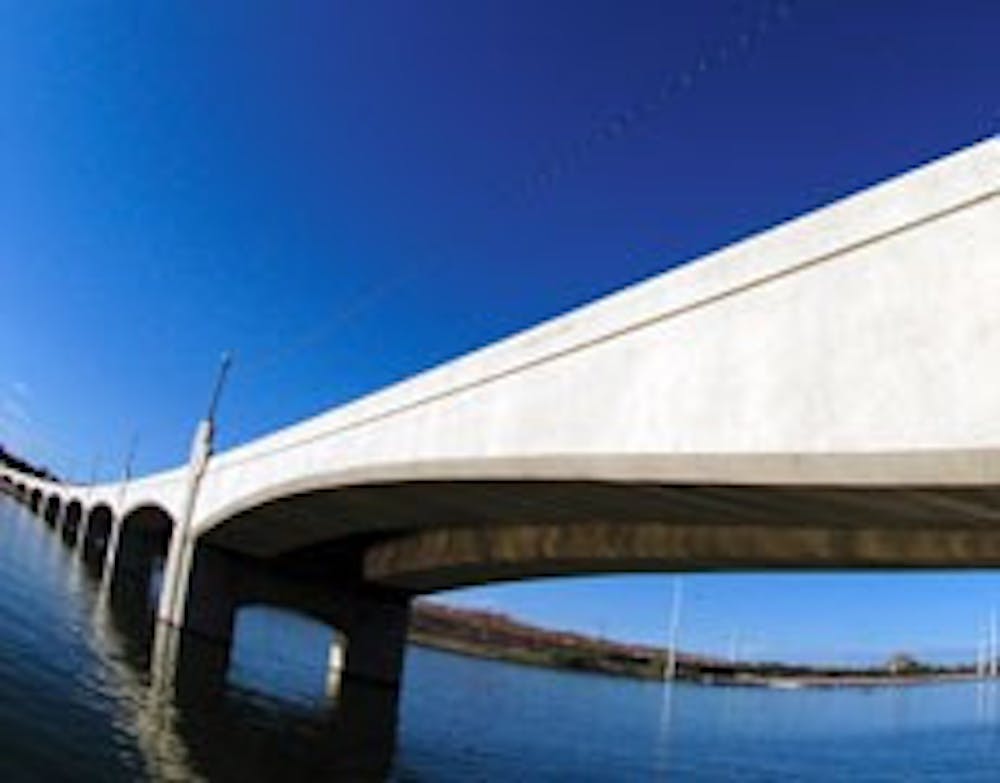Riding a boat on Tempe Town Lake could soon be as easy as driving up and hopping in.
The Tempe City Council gave preliminary approval at a meeting last week to constructing between 60 and 100 boat stalls on the lake, allowing boaters who pay a fee to store their watercrafts directly in the water.
"There is no doubt that Town Lake is a regional destination for water-related recreation and events," said Nancy Ryan, Tempe's Rio Salado project manager. "The lake provides an abundance of boating and fishing opportunities."
Council members approved the concept, allowing city staff to hammer out specifics.
The staff, including engineering, water quality, maintenance, security and liability experts, will develop an implementation plan and policies for the boat docks, according to city documents.
Thirty percent of the boat stalls would be reserved for residents of the hundreds of emerging condominiums and apartments along the Town Lake shores, Ryan said.
Another 30 percent would be reserved for other Tempe residents, she added.
The remainder would go to residents of other cities.
Rental rates remain unclear but would be similar to those at other Arizona lakes, according to documents.
A "convenience factor for being in a central urban location" may also be considered, the documents stated.
"We'll make sure it reflects a market rate for Arizona boating areas," Ryan said.
The project still faces hurdles. Any plan to add docks to the lake requires approval from three separate government agencies, Ryan said.
City officials must approve specific design plans. The U.S. Army Corps of Engineers requires a permit. And the Maricopa County Flood Control District must grant approval.
Tempe Town Lake sits in the otherwise-mostly-dry Salt River bed, a critical flood control channel through the Valley, Ryan said.
Water releases upstream trickle toward the lake and can drastically increase the water flow speed, she said.
City officials get 24 to 48 hours notice from Salt River Project before the electricity and water utility releases water from dams east of the valley, Ryan said.
If SRP releases a significant amount of water, Tempe officials must scramble to remove docks and other floating infrastructure from the lake, Ryan said. Otherwise, the fast-moving water can dislodge it, carrying it downstream where it could potentially damage one of the lake's rubber dams.
SRP last released water in early 2005, Ryan said.
Flood conditions persisted "on and off" through April that year, she said.
Officials were able to clear the lake of existing docks by the time the water arrived, about 24 hours after it was released upstream, she added.
If docks and private boats are added to the lake, it would be the owner's responsibility to remove boats in the event of a flood, according to documents.
In the event a flood occurs and owners can't be reached, the city would remove the boat at the owner's expense, similar to towing a vehicle, the documents say.
Dock removal would be the city's responsibility.
The urgency of removing floating objects was among the chief concerns for council members.
"I feel real strongly against having anyone other than the city owning these docks," Vice Mayor Hut Hutson said.
Council members also discussed the pricing for boating permits on Town Lake. There are 1,164 existing boat permits, according to documents.
City staff proposed increasing the rates for all permit holders.
The change would double the price for a Tempe resident, raising the cost from $5 to $10.
The rate for residents of other cities would increase from $25 to $30.
Council members asked the staff to explore the feasibility of offering permits to Tempe residents for free.
"I'm still not comfortable with the pricing for Tempe residents vs. non-residents," said Ben Arredondo, a council member.
Tempe residents already pay so many fees for various services that it would be nice to offer a few free of charge, said Council Member Onnie Shekerjian.
All Tempe residents pay for the lake, said Mayor Hugh Hallman.
Those who use it are charged in order to fund the administrative and maintenance costs associated without passing to costs along to those who don't use it, he said.
Hallman cautioned against introducing a substantial price differential between residents and non-residents.
"It is a regional amenity that we're trying to attract people to," he said.
Reach the reporter at: jonathan.cooper@asu.edu.




